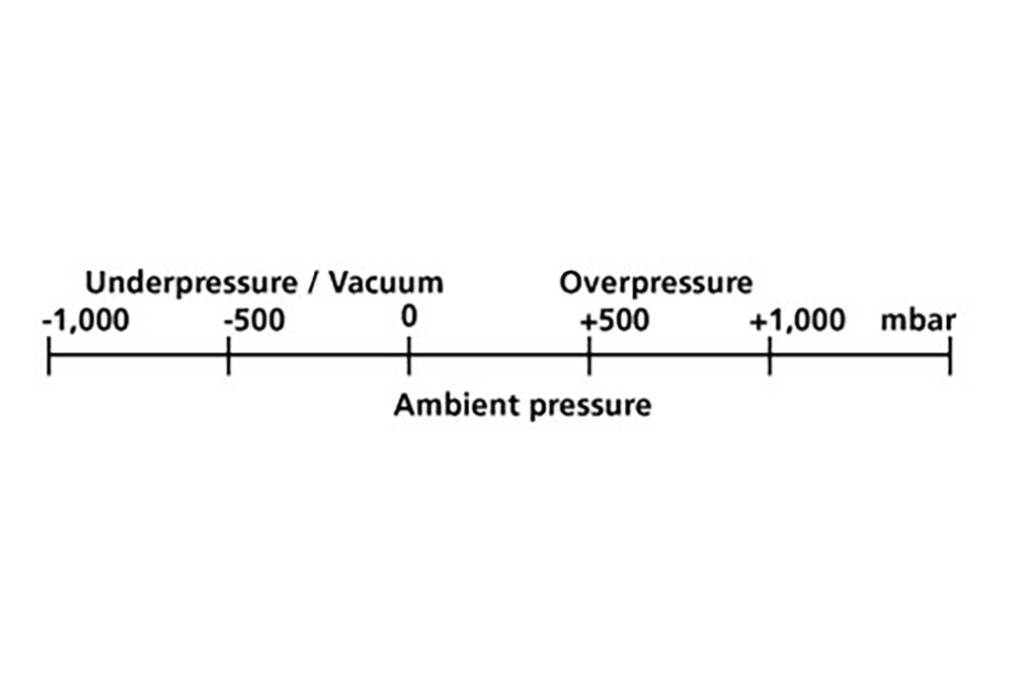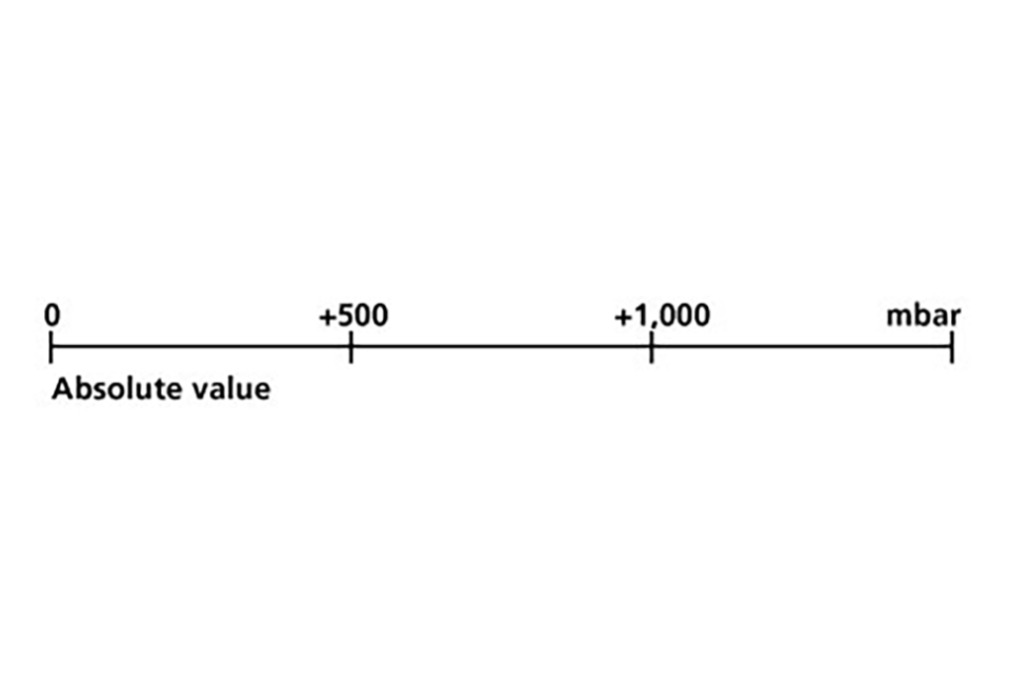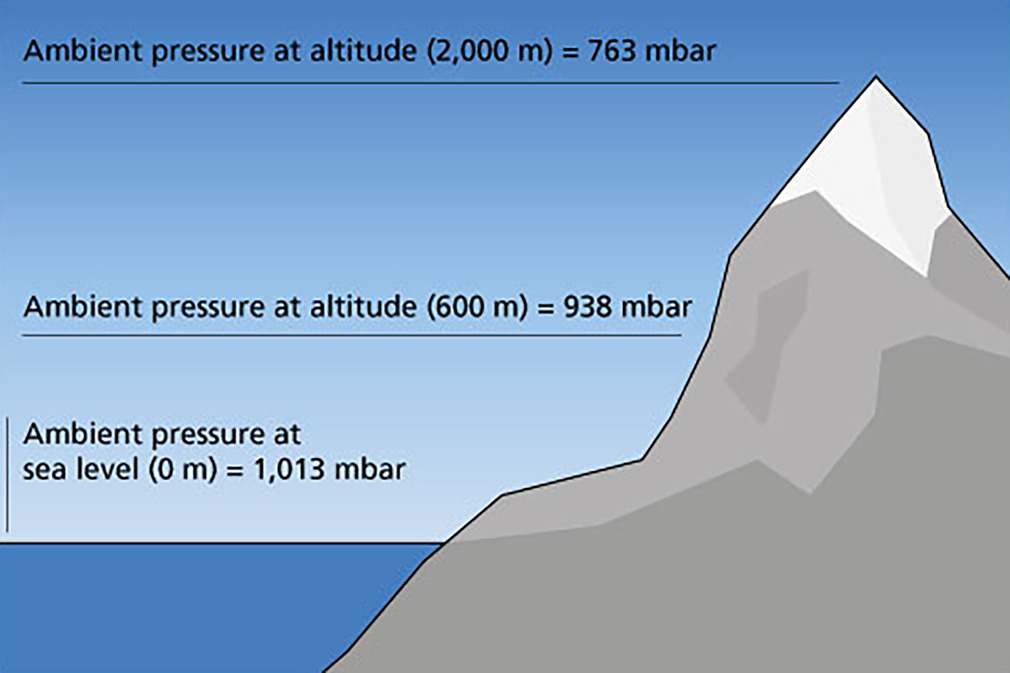Vacuum
Negative pressure (also referred to as a vacuum) describes a pressure range below the ambient pressure. At sea level, the ambient pressure is 1,013 mbar and decreases with increasing altitude.
The vacuum value is divided into different classes:
Low Vacuum
The vacuum range in which there is an absolute pressure between 1 mbar and ambient pressure (1,013 mbar) is referred to as a low vacuum. Areas of application for a low vacuum include light bulbs and vacuum cleaners. Vacuum technology also falls into this vacuum class. A vacuum for high suction forces and short cycle times can be generated relatively economically in this area.
Medium Vacuum
In a medium vacuum, there is an absolute pressure of 0.001 mbar to 1 mbar. This vacuum class is used in low-pressure discharge lamps, for example.
High Vacuum
In a high vacuum, the vacuum range is defined as an absolute pressure of 10-7 mbar to 10-3 mbar. This type of vacuum can be found, for example, in electron tubes or partial accelerators.
Ultra-High Vacuum
An ultra-high vacuum describes a vacuum in which the absolute pressure lies between 10-12 mbar and 10-7 mbar. This type of vacuum is used, for example, in gravitational shaft detectors.
Extremely High Vacuum
An extremely high vacuum describes all vacuum values with an absolute pressure that is less than 10-12 mbar. Space also falls under this vacuum class.
Space also falls under this vacuum class
In the field of vacuum technology, the vacuum is given as a relative value. This means that the vacuum is specified relative to the ambient pressure. The ambient pressure is used as a reference point with 0 mbar. Therefore, the vacuum value is specified with a negative sign (Picture 1).
In contrast, the vacuum is given as an absolute value in science. Here, the ambient pressure is not used as a reference point, but the absolute zero point (airless expanse such as space). In science, the vacuum is always given a positive sign (Picture 2).
Conversion Table for Vacuum/Pressure
A large number of measurement units are used internationally to specify vacuum values. In vacuum technology, the units Pascal [Pa], kilo-pascal [kPa], bar [bar] and millibar [mbar] have become established. The units are converted as follows:
0,001 bar = 0,1 kPa = 1 mbar = 100 Pa
The following table illustrates the conversion of the internationally used units of measurement for vacuums:
| bar | N/cm2 | kPa | atm, kp/cm2 | mm H2O | Torr; mm Hg | in Hg | |
|---|---|---|---|---|---|---|---|
| bar | 1,00000 | 10,00000 | 100,0000 | 1,01970 | 10.197,00 | 750,0600 | 29,5400 |
| N/cm2 | 0,10000 | 1,00000 | 10,0000 | 0,10190 | 1.019,70 | 75,0060 | 2,9540 |
| kPa | 0,01000 | 0,10000 | 1,0000 | 0,01020 | 101,97 | 7,5006 | 0,2954 |
| atm, kp/cm2 | 0,98070 | 9,80700 | 98,0700 | 1,00000 | 10.332,00 | 735,5600 | 28,9700 |
| mm H2O | 0,00010 | 0,00100 | 0,0100 | 0,00000 | 1,00 | 0,0740 | 0,0030 |
| Torr; mm Hg | 0,00133 | 0,01333 | 0,1333 | 0,00136 | 13,60 | 1,0000 | 0,0394 |
| in Hg | 0,03380 | 0,33850 | 3,8850 | 0,03446 | 345,40 | 25,2500 | 1,0000 |
Effects of the Atmosphere on the Vacuum
The atmosphere has a strong influence on the prevailing ambient pressure and the possible vacuum level. The ambient pressure depends on the height at which you are located and the temperature there. At sea level, the ambient pressure is 1,013 mbar. At a height of 600 m, the air pressure is already reduced to 938 mbar. At an altitude of 2,000 m, the air pressure is only 763 mbar.
The pressure loss has a major impact on vacuum handling processes. If the air pressure drops, the maximum achievable vacuum and the associated maximum holding force are reduced. For each 100 m increase in altitude, the air pressure drops by 12.5 mbar.
A vacuum generator that generates 80% vacuum achieves a vacuum of -810 mbar at sea level (ambient pressure = 1,013 mbar). The vacuum generator generates a vacuum of -610 mbar at a height of 2,000 m (ambient pressure = 763 mbar). The possible holding force of a vacuum suction cup decreases proportionally to the achievable vacuum. Application at sea level is therefore the ideal case.


